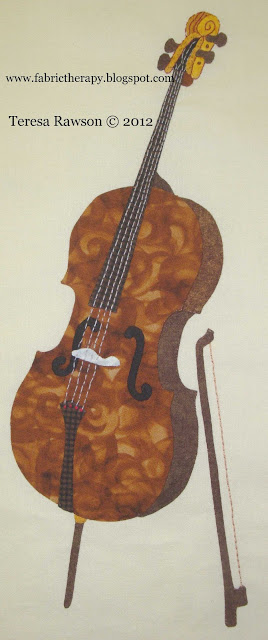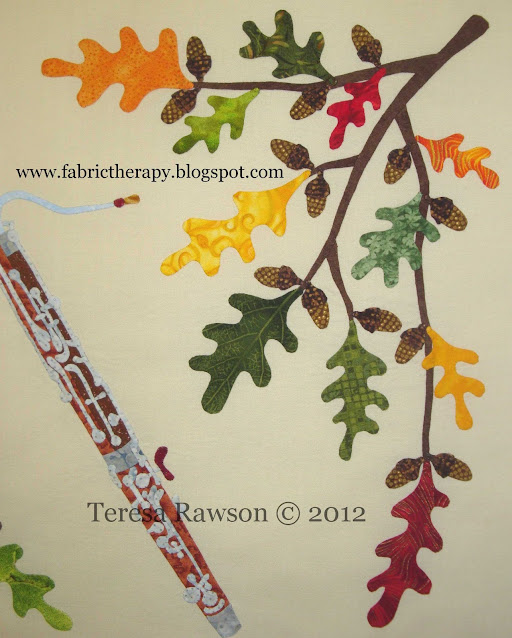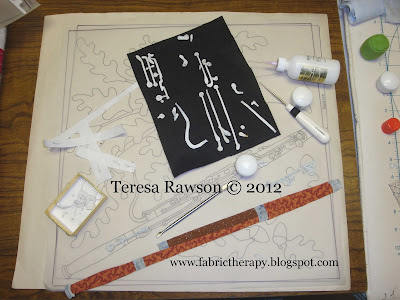The double bass, or string bass, is block #15 of my original applique project called "Baltimore Rhapsody." (You can read about the back story of this project here.)
This lowest of the stringed instruments is also called the bass viol, contrabass, and bull fiddle. It is about 6 feet tall and the player of this instrument has to either stand or perch on a high stool to play it (the violin is only 23-24 inches long, in comparison).

The double bass is not just a larger version of a violin. The "shoulders" (top of the body) are narrower and the back is flat rather than rounded like the violin, viola, and cello. These and other subtle differences in shape and proportion help to create the deep, velvet tones.
The double bass has four strings that are tuned in fourths rather than fifths, as the other three stringed instruments. This helps the player a little, as it decreases the hand span needed to play a scale from 14 inches to 10.5, which is still very challenging! The thickness and greater tension of the strings requires very strong fingers to play.
The music is written an octave higher than what is actually heard to avoid the excessive amount of ledger lines that would be needed to voice the actual low tones (ledger lines are used above and below the 5-line staff).
Before the time of Beethoven, the bass parts were pretty much just the bass line...rare difficult passages and melody lines. He had a good friend who played bass, which enabled him to understand the instrument better and write more demanding, thematically interesting parts for the bass to play. Very few solo pieces were written for this instrument.
In addition to producing the tone by bowing, the bass is often plucked (pizzicato) to produce a clear, resonant tone.
It takes great dedication to play such a large instrument...it can even determine what kind of car you drive! In addition to being the foundation of orchestral music, the bass replaced the tuba in jazz and dance bands, where is is most often plucked, rather than bowed, to produce the beautiful tones.
One more stringed instrument to go to round out the section...the viola.
In stitches,
Teresa :o)























































